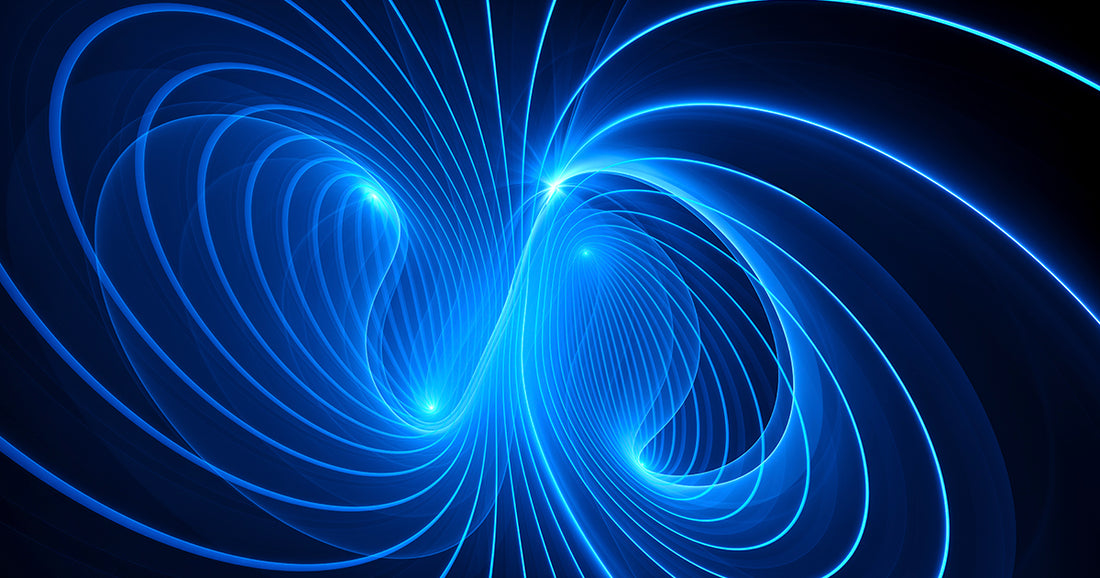Managing pain and inflammation in chronic conditions such as osteoarthritis poses a common challenge to vets. PEMF therapy offers a non-pharmaceutical, side-effect free addition to a multi-modal approach and is set to increase owner engagement in pet care.
Breakthroughs in innovation and an increasing shift towards a One Health approach are translating to significant progress in the therapeutic options available to vets, clients and patients. One such development is pulsed electromagnetic field (PEMF) technology, an extremely versatile treatment modality which is shown to be advantageous in the multi-modal approach to osteoarthritis. Its benefits also extend to wound healing, both post-operatively and for chronic wounds.
There are multiple human studies documenting the benefits of PEMF including reduced post-operative pain and use of pharmaceutical pain relief (Rohde et al, 2015)[i]. Veterinary studies have found PEMF therapy to improve wound healing (Alvarez et al, 2019) and provide longer lasting effects than NSAIDs in canine osteoarthritis (Pinna et al, 2012).
What is PEMF therapy?
PEMF therapy is the utilisation of a device that delivers an electromagnetic waveform via an antenna into the body to create a beneficial effect. It is a non-invasive, non-thermal process. The devices emit signals in short bursts at a low frequency, at a strength 1/1000th of that of a mobile phone, making it safe to use, with minimal side effects.
What are PEMF devices?
The origins of PEMF began in human medicine, where its popularity and use continue to grow. PEMF devices were first used in the 1930s for wound healing and were further developed and sold for pain management in 1950. Results were being seen in human medicine without the mechanism of action fully understood, and so in the 1970s clinicians began to research PEMF, specifically its use in treating non-union fractures. As knowledge grew, scientists began to develop devices which emitted specific wavelengths, known as targeted PEMF (tPEMF). Specific frequencies, durations and shape of the waveform were designed to target certain biological processes to induce anti-inflammatory responses.
The devices themselves all consist of a battery and an antenna. Some are mats, others are handheld portable units. The variation between devices is not only defined by its size, but also the shape and strength of the waveform it emits. The size of the antenna, duration of pulses and the effective working zone - which radiates out in either direction from the coil, can all vary from unit to unit.
With much variation between devices, it is important to ensure the device being used has been shown to be efficacious for the use intended. Devices with frequency of 27.12MHz, a 2ms pulse width and a 2Hz pulse frequency have had their benefits documented in numerous studies.
How does PEMF technology work?
The science behind PEMF technology is based on Faradays law - whereby a pulsing electromagnetic field will induce an electrical field in a nearby conductor, for example, bone or soft tissue. The tPEMF devices deliver these electromagnetic signals into the body where they have an effect on a cellular level. Each pulse hits the cells with an electromagnetic field. The signal disrupts the cell membrane, which has a negative charge, causing a temporary depolarisation of the plasma membrane, which results in the voltage dependent calcium channels opening.
PEMF exposure results in increased release of intracellular calcium (Ca2+), leading to increased binding of Ca2+ to calmodulin (CaM). Ca2+/CaM binding activates nitric oxide synthase (cNOS), which produces short bursts of nitric oxide (NO). NO then binds to guanylyl cyclase, increasing production of cyclic guanosine monophosphate (cGMP). The upregulation of NO and cGMP are known to activate endogenous anti-inflammatory responses by reducing production of pro-inflammatory mediators and increasing activation of macrophages and monocytes. This also enhances blood flow through the effects of NO as a vasodilator and increases production of growth factors, required for repairing tissue.[ii]

Furthermore, cGMP causes transcriptional activation of various genes within the cell nucleus, producing Growth Factors and other proteins, which promote tissue regeneration, neovascularisation and tissue remodeling. NO also has the potential to influence cells of the immune system and nervous system, making it an important molecule for maintaining homeostasis[i], iii.
PEMF is particularly useful in promoting healing, as on a cellular level PEMF treatment triggers the following -
- Endothelial cells initiate neovascularisation
- Fibroblasts proliferate and repair the external matrix
- Muscle cells, chondrocytes and osteoblasts all have the potential to proliferate and repair
Interestingly, only damaged cells respond to PEMF. Bone and muscle growth would not happen to healthy tissue if PEMF was applied, so the mechanism of action is specific to activating these damaged cells into healing themselves.ii,iii
Another strength of PEMF is that does not appear to work via one cascade. Several different pathways have been identified. Along with the Ca2+/CaM pathway, PEMF treatment can also increase the expression of heat shock proteins. These have cytoprotective and anti-apoptotic effects. PEMF treatment has also been shown to increase cell membrane adenosine receptor expression. When activated, an associated reduction of prostaglandins and inflammatory cytokines occurs.ii
Has PEMF therapy been proven to work?
The positive effects of these biological pathways are advantageous to both human and animal health. The cascade results in reduced inflammation and oedema, with the knock on effects being pain control and improved environment for wound healing. Translating these generic positive results into useful protocols has been achieved through the development of targeted devices. These devices have specific frequencies and pulse lengths, which trigger the desired cascades. While the number of human studies far outweighs the veterinary ones, in recent years tPEMF has been gaining signification traction with vets globally.
- tPEMF in Wound Healing
Wound healing is complex and involves many pathways for effective resolution. PEMF has been shown to be effective in promoting wound healing both post-operatively, but also for chronic wounds such as pressure sores. PEMF has been shown to cause increased angiogenesis, offering increased blood flow and oxygenation to wounds (Mayrovitz et al, 1995).[ii],iii
In dogs, the use of PEMF has shown significant improvement in post-operative wound healing following hemilaminectomy, with improved wound scores at 6 weeks post-surgery (Alvarez et al, 2109)[iii]. Other studies have shown treatment with PEMF enhanced wound epithelisation in open cutaneous wounds and provided indications of early contraction (Scardino et al, 1998)[iv].
- tPEMF in Osteoarthritis
Osteoarthritis is a common condition in dogs, and many cases are managed with a multimodal approach in which NSAIDs, steroidal drugs, nutrition, exercise and manual rehabilitation therapy are all included. Not all of these solutions are well tolerated by dogs or appropriate for long term management. There is scope for tPEMF devices to be a useful addition to managing these cases. In a 2012 study, when compared to an NSAID the PEMF therapy was found to outperform drug treatment in long term follow up, with its beneficial effects lasting beyond the cessation of treatment (Pinna et al, 2012)[v].
- tPEMF in Pain Management
Following injury, the acute inflammatory response results in pain and oedema. Although a degree of inflammation has a crucial role in healing, the levels can be managed to assist in pain management. The biological cascades that occur following a session with a tPEMF device result in stimulating the body’s own anti-inflammatory system. Following surgery for thoracolumbar intervertebral disc extrusion there was statistically less pain and significantly lower spinal cord injury biomarkers (glial fibrillary acidic protein) in those dogs treated with tPEMF. It was also concluded that incision associated pain was reduced in this group (Zidan et al, 2018).[vi]
Creating new opportunities in practice, using PEMF
There is huge scope and potential for PEMF devices to be incorporated into practice protocols. Devices can be kept on site for use on patients following surgery, as part of their post-operative care. It is also useful for patients following orthopaedic injury as the device works through casts and dressings, and while these pets are on cage rest it can easily and effectively be applied to promote healing. Of course, their application need not be limited to these indications and the anti-inflammatory effects can be beneficial to a wide range of cases and situations.

Strengthening the vet-owner relationship using PEMF therapy at home
One of the standout features of PEMF devices is the ability for them to be used at home, with sessions administered by pet owners, and the advantages of this are many. Firstly, it engages owners with their pet’s health and recovery. Involving owners helps to make them feel empowered, especially in more chronic conditions, where daily home management has a huge effect on the pet’s quality of life.
Many owners giving long term treatments are looking for non-pharmaceutical solutions to assist their pet. PEMF devices can be used as ad adjunct or standalone, and are appealing to many owners. Secondly, pets can receive their treatments in the comfort of their own home. This reduces potential anxiety and stress of both the pet and their owner. At home treatments also save the practice time, and generate extra profit. Specialist rehabilitation vet Dr Veerle Dejonckheere comments that almost all of the devices she rents out to clients translate into sales. Furthermore, once the battery runs out, most of her clients re-order another device immediately.
The future of pet care
PEMF technology is a safe, effective tool for activating the body’s own anti-inflammatory system. Incorporating this innovative technology into current protocols has potential to improve outcomes, build client trust and support pet health. PEMF technology can help veterinary practices meet the expectations of modern consumers, as trends lead away from traditional services to more interactive and collaborative methods. Engaging and working with pet owners ultimately improves pet welfare, which is a universal goal.
Find out about the Assisi Loop.
[i] Luigi et al Mechanisms of actions and effects of PEMF in medicine, Journal of medical research and surgery, 2020.
[ii] Mayrovitz H.N, Larson P.B 1995. A preliminary study to evaluate the effect of pulsed radio frequency field treatment on lower extremity peri-ulcer skin microcirculation of diabetic patientsWounds, Vol. 7 (1995), pp. 90-93
[iii] Leilani X Alvarez et al, Effects of PEMF therapy on canine hemilaminectomy: A double bline, randomised, placebo controlled clinical trial. J Am Anim Hops Asssoc (2019) 83-91
[iv] Scardino et al, Evaluation of treatment with PEMF on wound healing, clinical copathological variable and central nervous system activity of dogs. Am J Vet Res 1998 Sep 1177-81
[v] Pinna et al 2012, The effects of pulsed electromagnetic field in the treatment of osteoarthritis in dogs: Clinical Study Pak. Vet. J., 33 (2012), pp. 96-100
[vi] Zidan et al, 2018 The effect of electromagnetic fields on postoperative pain and locomotor recovery in dogs with acute, severe thoracolumbar intervertebral disc extrusion: a randomized placebo-controlled, prospective clinical trial, J. Neurotrauma (2018)
[i] Rohode et al Effects of pulsed electromagnetic fields on interleukin-1 beta and postoperative pain: a double-blind, placebo-controlled, pilot study in breast reduction patients Plast. Reconstr. Surg., 125 (2010), pp. 1620-1629
[ii] Gaynor et all 2018. Veterinary applications of pulsed electromagnetic field therapy, Research in Veterinary Science, Volume 119, August 2018 pg 1-8

